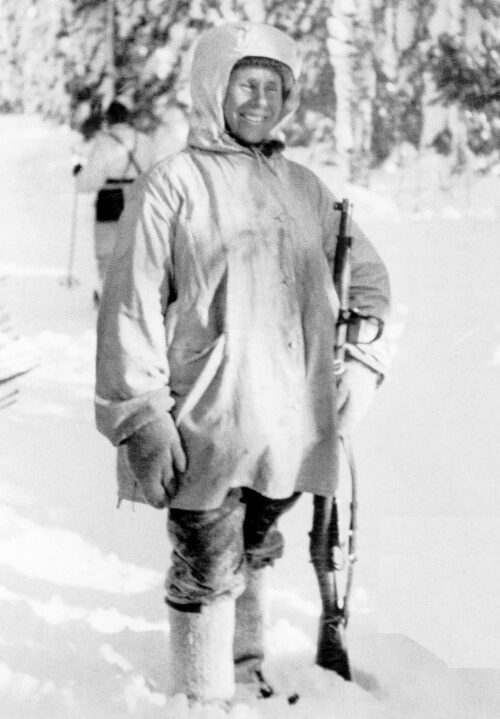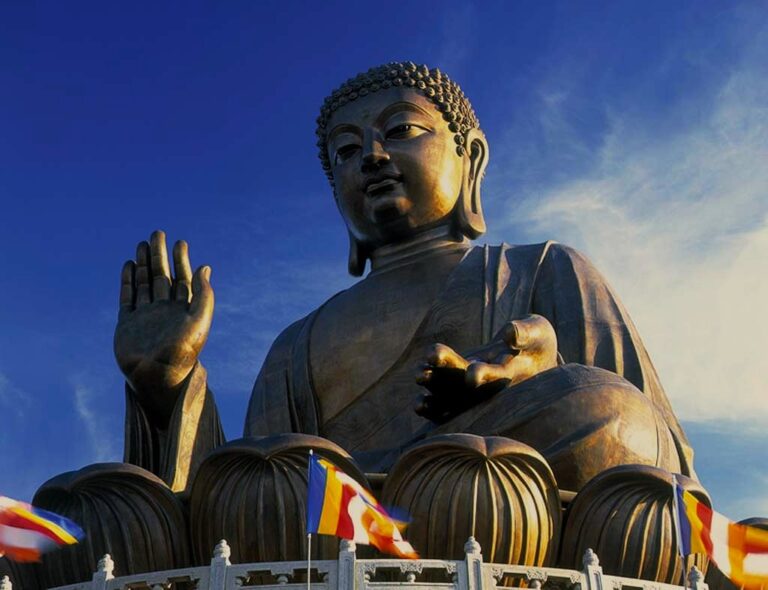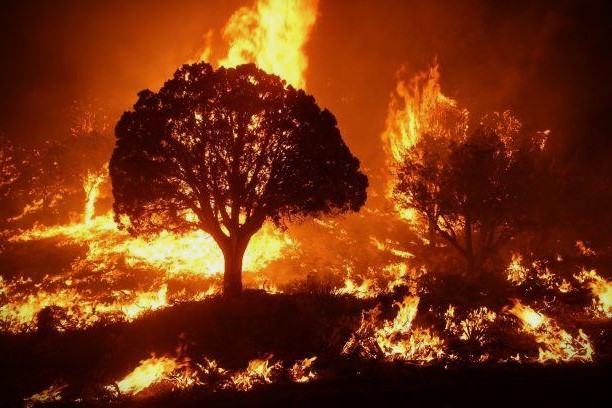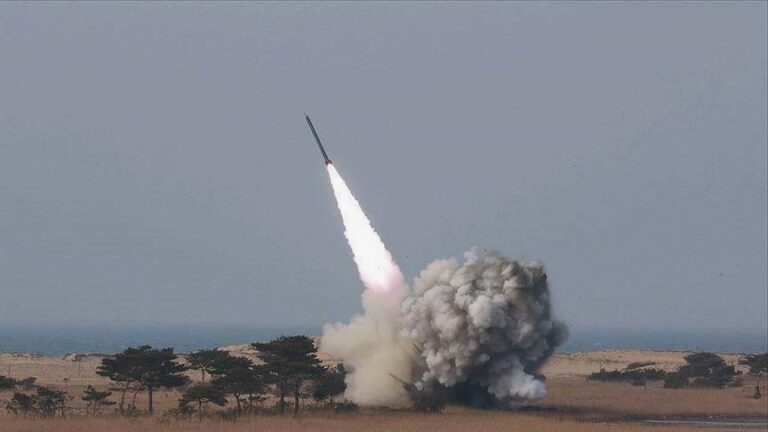
Simo Häyhä, known by his nickname “The White Death,” is one of the most enigmatic and feared figures in military history. His legendary status as the deadliest sniper of all time was forged during the Winter War between Finland and the Soviet Union, which lasted from 1939 to 1940. With a remarkable kill count of 505 confirmed kills, Häyhä’s story is not just one of incredible marksmanship, but also of unwavering determination and skill in the face of seemingly insurmountable odds.
This is the story of how a quiet Finnish farmer became a symbol of resistance and left a lasting mark on the world of warfare.
1. Early Life of Simo Häyhä: From Hunter to Soldier
Born on December 17, 1905, in the small village of Rautjärvi in southeastern Finland, Simo Häyhä grew up in a humble farming family. From a young age, he developed a deep connection with the forest and nature. Living in a rural area, Häyhä spent much of his time learning the skills necessary for survival, particularly hunting. His knowledge of the land, the cold winters, and his ability to shoot with precision became the foundation for his future as a sniper.
Häyhä eventually joined the Finnish Civil Guard in his early twenties, where he further refined his marksmanship. It was here that he became known for his ability to remain calm and patient, making him an ideal candidate for sniper training. His skill with a rifle soon became well-known, though no one could predict the magnitude of his success in the coming war.
2. The Winter War: A Struggle for Survival
The Winter War began on November 30, 1939, when Soviet forces invaded Finland, hoping to quickly overpower the small Finnish military. The Soviet Union, with its vast army and technological advantage, expected to crush Finland in a matter of weeks. However, the Finnish soldiers, fighting to protect their homeland, put up a fierce resistance despite being outnumbered.
The Finnish terrain played a crucial role in the defense strategy, and the Finnish soldiers—many of whom were well-trained hunters—used the snow-covered forests and harsh winter conditions to their advantage.
This is where Simo Häyhä would rise to prominence. Operating primarily in the Kolla River region, Häyhä would single-handedly take on the Soviet forces, using his knowledge of the land to blend into the snowy wilderness and pick off targets from a distance.
3. The White Death: A Ghost in the Snow
Simo Häyhä’s legendary reputation was born from his ability to operate under the most extreme conditions, staying hidden in the snow and eliminating Soviet soldiers with incredible efficiency. He became known as “The White Death” due to his ability to remain undetected while killing Soviet soldiers from afar.
His Tactics
- Iron sights instead of a scope: Häyhä avoided using a sniper scope, which often reflected sunlight and gave away his position. By using the iron sights of his Mosin-Nagant rifle, he reduced the risk of detection and maintained a deadly accuracy.
- Patience and Stealth: Häyhä would often wait for hours, blending into the snow with only his rifle and his camouflage gear. He wore all-white clothing that matched the snow, allowing him to remain virtually invisible.
- Short bursts of fire: After each shot, he would remain completely still, sometimes for hours, to avoid detection. He understood that one well-placed shot could be enough to eliminate a target, and he made each one count.
Despite the constant danger, Häyhä would continue this solitary hunt for weeks, leaving behind a trail of fallen Soviet soldiers. His success made him a target for the Soviets, who began to send counter-snipers to track him down. Still, Häyhä remained elusive and continued to claim Soviet lives from the shadows.
4. The Legendary Kill Count
Over the course of the Winter War, Häyhä recorded 505 confirmed kills with his rifle, making him the deadliest sniper in history. This number does not include those he eliminated with his submachine gun (which he also carried into battle), further adding to his reputation as an unstoppable force.
Simo Häyhä’s accuracy and ability to kill from long distances were unmatched. He did not just kill for the sake of it—his actions were calculated and precise. His purpose was to disrupt Soviet operations, instill fear, and reduce the morale of the Soviet forces. As a result, his presence on the battlefield was both a psychological weapon and a literal one.
5. The Soviet Effort to Hunt Him Down
As Häyhä’s success grew, so did the Soviet attempts to eliminate him. Soviet commanders realized that The White Death was more than just a sniper—he had become a symbol of Finnish resistance. To remove the threat, they deployed counter-snipers and used artillery bombardments in an attempt to flush him out.
One such attempt proved to be nearly fatal. On March 6, 1940, while operating in the snow-covered forests, Häyhä was hit by an explosive bullet that shattered his jaw and left him severely wounded. He was found unconscious and rushed to a Finnish field hospital, where he slipped into a coma for several days.
Though he had been critically injured, Häyhä survived and began to recover. When he regained consciousness, the Winter War was over—the Finns had signed an armistice with the Soviet Union on March 13, 1940, bringing an end to the conflict.
6. Life After the Winter War
Despite his severe injuries, Simo Häyhä’s spirit was unbroken. After spending several months recovering, he returned to his quiet life as a farmer and hunter in rural Finland. Unlike many other wartime heroes, Häyhä never sought fame or attention for his accomplishments.
He remained largely silent about his role in the war, but when asked about his incredible success as a sniper, Häyhä simply said:
“I did my duty, just like every other soldier.”
Häyhä went on to live a long and relatively peaceful life, dying at the age of 96 on April 1, 2002. He never boasted about his war achievements, but his reputation as “The White Death” has endured for generations.
7. Legacy of Simo Häyhä
Simo Häyhä’s impact extends far beyond his confirmed kills. He is remembered for:
- His mastery of camouflage and stealth: Häyhä’s ability to remain hidden in the snow and his use of the natural environment to his advantage are still studied by snipers and military tacticians today.
- The psychological effect on the Soviet forces: His success didn’t just damage Soviet forces physically—it also deeply affected their morale, as many soldiers feared the unseen sniper lurking in the snow.
- Symbol of Finnish Resistance: Häyhä became a symbol of Finnish resilience against a much larger and stronger enemy. His actions showed that even in the face of overwhelming odds, the determination of a few individuals could make a significant difference in the outcome of a war.
The Soviets, though eventually victorious, never forgot the terror Häyhä instilled in their ranks. Even after the war, they admitted that he had been “a serious problem” for their forces during the Winter War.
8. Conclusion: A Hero Without a Crown
Simo Häyhä’s story is one of quiet heroism, extraordinary skill, and sheer determination. His record-breaking kill count, along with his ability to remain hidden in the snowy wilderness, made him one of the most feared snipers in history. His role in the Winter War exemplifies how even the most unlikely individual—a farmer with a rifle—can become a legend.
“The White Death” remains a figure of mythic status in both Finland and military history, a reminder of the incredible power of skill, patience, and ingenuity in the face of adversity.






